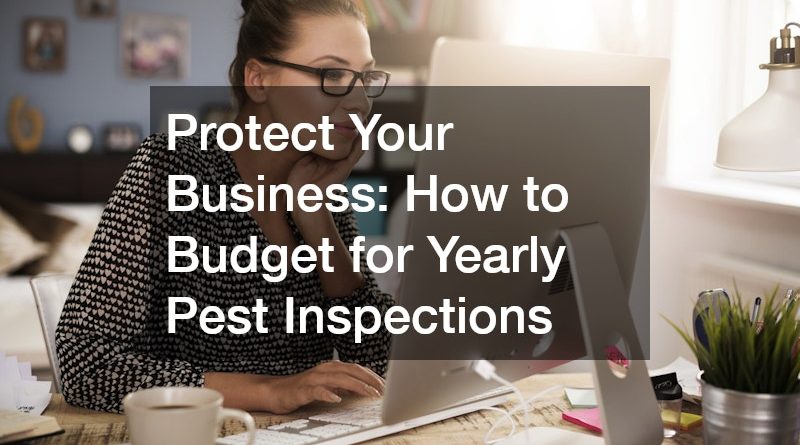Protect Your Business How to Budget for Yearly Pest Inspections

In the competitive world of business, safeguarding your premises from unforeseen challenges is crucial. Pest infestations can not only damage products and infrastructure but also tarnish your reputation. Beyond the physical damage, they can disrupt operations, lead to regulatory fines, and erode customer trust.
This article provides a comprehensive guide on budgeting effectively for yearly for local pest control companies to come in and perform inspections, ensuring your business remains protected and unscathed. With strategic planning and consistent maintenance, you can prevent issues before they arise and create a safe, professional environment that supports long-term growth and success.
Why Are Yearly Pest Inspections Crucial for Businesses?
Pests can significantly disrupt business operations by damaging stock, contaminating products, and creating unsanitary conditions. Every year, businesses lose billions of dollars due to pest-related damages and regulatory fines, emphasizing the need for regular inspections. Maintaining a pest-free environment not only ensures operational continuity but also enhances customer trust and satisfaction.
The presence of pests can negatively affect a company’s reputation, as consumers are likely to avoid businesses associated with unsanitary conditions. In industries like food service, even a single pest sighting can lead to a public relations crisis and loss of clients. Beyond tangible damages, pests affect employee morale and productivity by creating an uncomfortable and potentially hazardous working environment.
Financially, unaddressed pest issues can result in steep regulatory fines, increased insurance premiums, and costly remediation efforts. Budgeting for yearly inspections is a proactive approach that can prevent these financial pitfalls. The long-term savings gained from avoiding pest-related shutdowns usually outweigh the cost of regular inspections.
How Much Should You Allocate for Pest Inspection Budgets?
Allocating the right budget for pest inspections involves understanding various factors such as the size of your facility and the type of industry you operate in. Larger facilities require more extensive inspections, naturally increasing costs compared to smaller properties. Additionally, businesses in regions with higher pest prevalence may need to allocate a larger budget to effectively manage and prevent infestations.
Another crucial factor influencing the budget is the specific requirements of the local health and safety regulations, which can vary significantly. Local laws often dictate the frequency and severity of inspections, necessitating additional expenditure for compliance. Businesses should also consider the level of pest management already in place; those with minimal existing measures may initially face higher costs to achieve an adequate level of prevention.
Seasonal fluctuations can affect pest pressures and inspection costs as well. During certain times of the year, pest activity increases, potentially necessitating additional inspections and treatments. Properly budgeting for these fluctuations by setting aside a contingency fund can help smooth out the financial strain of sudden pest issues, ensuring business continuity throughout the year.
What Are Some Cost-Effective Strategies for Pest Management?
Implementing cost-effective pest management strategies involves integrating proactive and sustainable practices into daily operations. Regular staff training on sanitation protocols can significantly reduce the potential for infestations. By ensuring all employees understand their role in maintaining a clean environment, businesses can prevent pest problems before they start.
Investing in preventive infrastructure, such as sealed waste bins and entryway barriers, can help deter pests from entering your facility. Regular maintenance of building exteriors, like repairing cracks and holes, also minimizes entry points for pests. When combined, these tactics form a comprehensive approach to pest prevention that can offset the need for more expensive reactive measures.
Utilizing professional pest management services for routine inspections and maintenance allows businesses to stay ahead of potential pest issues. These services provide specialist knowledge and strategic interventions tailored to specific business needs, enhancing overall pest prevention efforts. Partnering with a pest management professional is a wise investment that balances cost with the necessity of maintaining a pest-free business environment.
The health of your business relies heavily on preventive measures and wise financial planning. By understanding the importance of yearly pest inspections, accurately budgeting for them, and employing cost-effective solutions, you protect not just your assets but also your brand integrity. Implement these practices to ensure your business thrives in a pest-free environment. A proactive approach helps avoid costly infestations, maintains a clean and professional space, and reinforces customer confidence.
Whether you operate a storefront, restaurant, or office, making pest control a regular part of your operations supports long-term success and peace of mind for both staff and customers.
.

